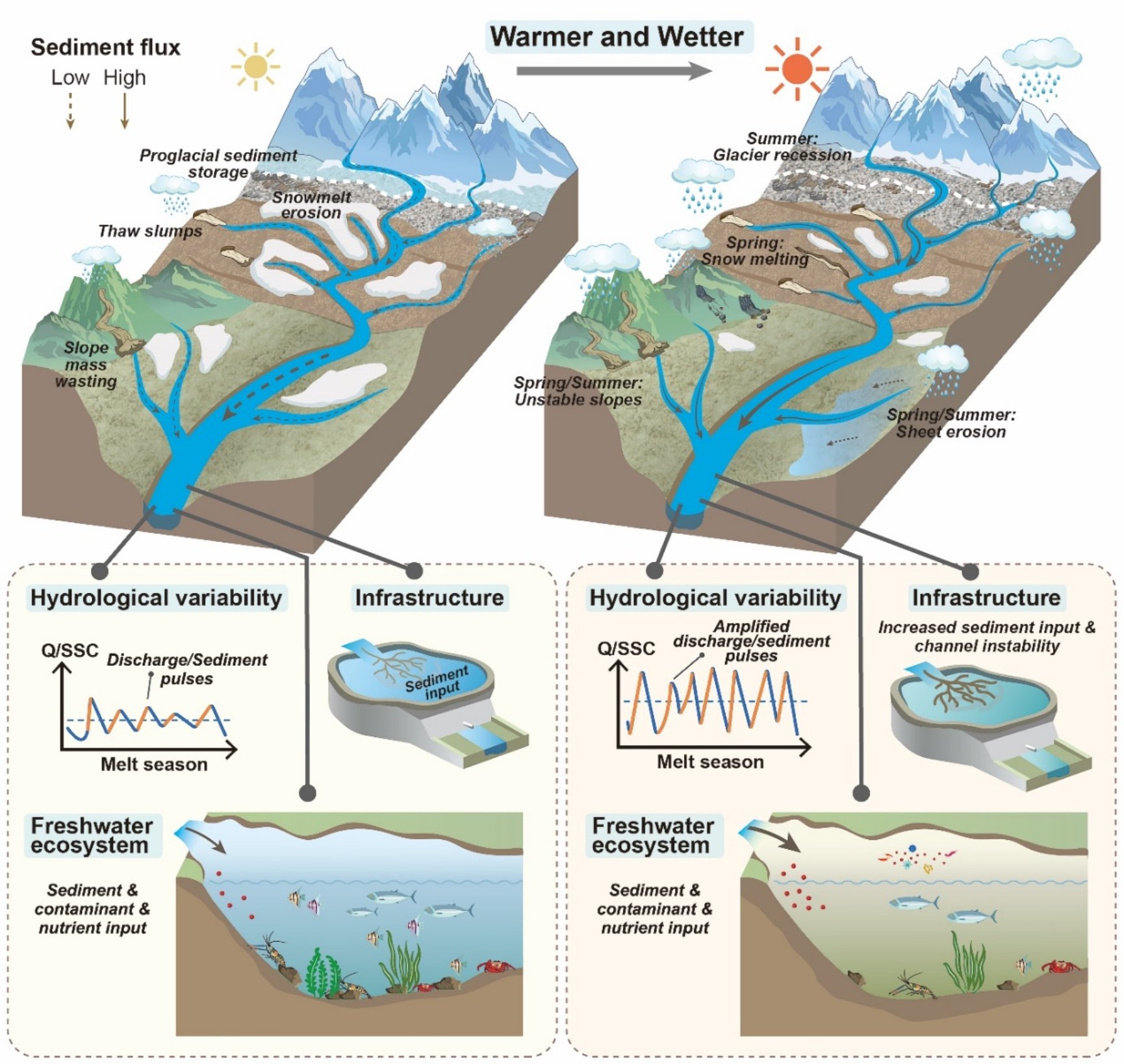
Climate change and cryosphere degradation have remarkably impacted riverine water and sediment fluxes from polar and high-mountain regions. Shifts in the timing and magnitude of fluvial fluxes have crucial implications as they fundamentally alter the seasonal allocation of sediment, organic matter, nutrients and pollutants, thus affecting the year-round provision of water, food, and energy to populated and vulnerable mountain communities downstream. However, the responses of seasonal dynamics and regime shifts in sediment transport remain largely understudied due to the lack of long-term and fine-scale hydrological records and the complexity of the underlying hydrogeomorphic processes.
In a recent paper published in Science Advances led by the team of Prof. Dongfeng Li’s group in College of Environmental Sciences and Engineering, Peking University, they identified the climate-driven regime shifts in suspended sediment transport in four distinct basins in the Third Pole, characterized as glacial, nival, pluvial, and mixed hydrological regimes and developed a monthly scale sediment-availability-transport model (SAT-M) to simulate climate-driven sediment dynamics and reproduce such regime shifts. SAT-M can help facilitate sustainable reservoir operation and river management in wide cryospheric regions under future climate and hydrological change.
By leveraging decadal monthly hydro-climatic observations in studied basins from the 1960s to 2000s, this research finds that spring sediment fluxes are shifting from a nival- towards a pluvial-dominated regime due to less snowmelt and more erosive rainfall. Meanwhile, summer sediment fluxes have substantially increased due to disproportionately higher sediment transport yielded by greater glacier meltwater pulses and pluvial pulses.
Such shifted sediment-transport regimes and amplified hydrological variability in cryosphere-fed rivers add additional stresses to downstream hydropower and irrigation infrastructure and ecosystems, and exacerbate the damage caused by floods. Specifically, increases in river turbidity in the melt season can threaten river biotic conditions by blocking sunlight from reaching the streambed, limiting respiration and deteriorating feeding conditions of benthic macroinvertebrates and fishes, causing severe ecological consequences. Besides, the substantially increased proportion of sediment flux transported in summer can jeopardize downstream hydropower and irrigation infrastructure by causing rapid reservoir sedimentation and thus reducing effective storage capacity.

Increased sediment sources, amplified hydrological variability, and associated social-ecological impacts.
SAT-M presented herein effectively reproduces the shifted sediment-transport regime by constraining runoff surges and climate-driven changes in sediment supply, e.g., thermally activated sediment sources from thawing permafrost and the retreat of glaciers. More importantly, SAT-M offers a flexible methodology framework to simulate sediment transport in response to rapid hydroclimatic changes and thus can be freely applied in wide cryospheric regions by selecting basin-specific drivers. Given anticipated increases in flooding risks and increased variability in precipitation and runoff in cold mountain regions, SAT-M presented herein provides a promising simulation tool to assist in predicting sediment fluxes and peaks, optimizing sediment management of dams and reservoirs, and mitigating their downstream impacts under future climate change scenarios.
Dr. Ting Zhang is the first author of the study, and Prof. Dongfeng Li is the corresponding author. Other co-authors include Professors Jinren Ni (Peking University), Amy East (U.S. Geological Survey), Albert Kettner (University of Colorado Boulder), Jim Best (University of Illinois at Urbana-Champaign), and Xixi Lu (National University of Singapore). This study is funded by the National Natural Science Foundation of China (No. 92047303 and 51721006).